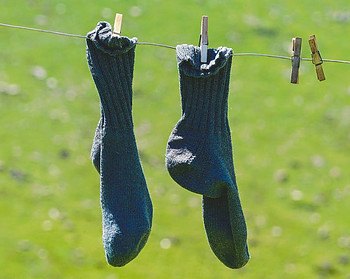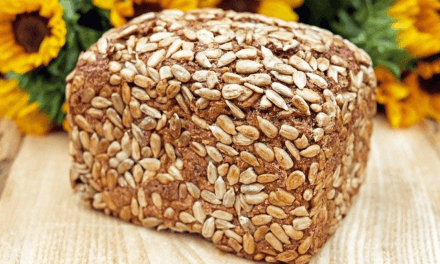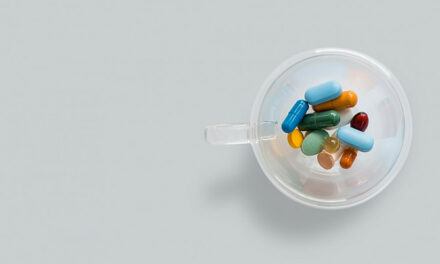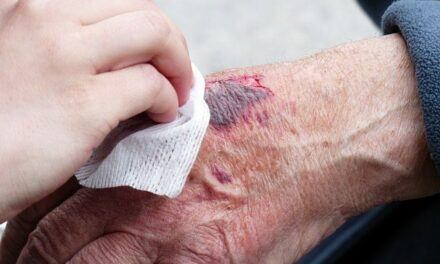Diabetes can affect the blood vessels resulting in poor blood circulation at your feet, which slows down the healing of wounds. When the blood circulation is weak, the wounds can get infected easily, if proper care is not taken.
High blood glucose level associated with diabetes also slows down the immune system. Poor circulation can also make your legs and feet to swell up as a result of fluid retention in your feet and legs.
Taking good care of your foot is an important part of managing diabetes. This is because many people with diabetes are prone to foot ulcers as a result of poor circulation and peripheral neuropathy which causes loss of feeling in the feet. This can make one not to notice when one is injured.
If you are diabetic, even small cuts, blisters, cracks or calluses can result in complex foot ulcers which takes time to heal because of poor blood circulation at the feet.
These foot ulcers, if not properly taken care of, can get infected, resulting in amputation and in severe cases even death.
The good news is that above complications of a diabetic foot can be prevented with proper foot care.
While there are many strategies to improve blood circulation in legs (e.g. massage), wearing a diabetic sock or diabetic compression socks is proven to be effective. This is because those socks are specially designed to help keep your diabetic feet healthy and prevent injury.
The intention of this guide is the compare the Diabetic Socks vs Compression Socks (Stockings) in terms of their effect on diabetes. We will also be covering how to choose socks and stockings, how to wear them.
For those people that both diabetic socks and compression socks are contraindicated, we will explore the alternative options so they are not left ignored.
Let’s begin our Diabetic Socks vs Compression Socks comparison by defining diabetic socks.
What is a Diabetic Sock?
Diabetic socks are seamless and non-elastics socks specially designed to help you to protect your feet. They also help you relax and be more comfortable by alleviating pressure in the lower leg and foot. Not only that a quality diabetic sock can even prevent skin blistering and reduce the chances of accumulation moisture on the skin surface.
These specialized socks are usually seamless to reduce friction to the level of nerve layers and also alleviate any discomfort or pain to the nerves, with a non-elastic feature that helps to prevent constriction.
The materials use for diabetic socks usually have moisture-wicking ability to keep your feet dry. In that way, diabetic socks also minimize the risk of your foot, developing fungal infection or blisters.
The socks are also padded slightly to prevent injury to your ankle, feet and calf.
Tip: HeelBo Heel and Elbow Protectors are similar in terms of their ability to protect your ankle and elbow from injuries and knocks.
How Diabetes Socks Differ from Traditional Socks?
Traditional socks differ from diabetic socks for the following reasons:
- They are usually made of cotton and elastic, and these materials can trap moisture and reduce blood circulation at the top of the sock.
- Regular socks may be too loose or tight-fitting and easily stretched out forming lumps at the heel and beneath the toes areas.
- They contain seams around the cuff and toes, which increases friction, irritating sensitive pressure points in the feet and slows down circulation in the foot.
The above qualities are unlikely with diabetic socks which shows the following.
- Diabetes socks are often made of blends of finer texture fabrics from materials like wool nylon, charcoal, bamboo and spandex.
- They are not made of elastic and are designed with minimal or no seams.
- The materials used have the moisture-wicking ability and antimicrobial properties.
- They fit your feet perfectly, not strangling them.
- Diabetes socks do not mean to form lumps even when they are worn out because they are produced with accurate sizes for perfect fitting without excess fabric which result in lumps formation.
- They also have extra padding and cushioning at the sensitive pressure points to help in preventing injury from friction.
Types of Diabetic Socks
Diabetic socks are made of different materials, in various lengths and design, with the latest design being called the “smart diabetic sock.”
The types of the diabetic sock are below.
1. Diabetic socks base on material
Diabetic socks are commonly made from a combination of spandex (for its ‘stretch’ properties) with materials like wool, acrylic, bamboo merino, activated charcoal.
These materials can wick more moisture than the regular cotton socks and reduces the chances of material abrasion on the skin because they are ‘wrinkle-resistant’.
Also, the spandex is less constricting than elastic.
It is very important that the material used for diabetic socks is anti-microbial to prevent fungal and bacterial growth on the wet and moisture-prone region such as the feet. That is because when bacteria and moisture are present on an injury, it can cause serious complications for a person with diabetes.
The diabetic socks that are made of non-cotton materials such as wool, bamboo and charcoal, which naturally come with anti-microbial properties.
Some of the diabetic socks that are more expensive contain copper- or silver-threading, which help you fight against bacteria and fungi infections. Those metal content also prevent foot odor.
Some of the diabetic socks based on materials are noted below.
- Soft yarns Diabetic socks
They are mostly made from fabrics with a fine texture like bamboo and wool with natural antimicrobial properties. Such combinations minimize abrasion on the skin that can result from wearing socks with a stiff fabric.
- Diabetic socks made with Blister guard yarn
This type of yarn is used to reduce friction that may cause blisters.
- Copper-infused diabetic socks
Made with a yarn infused with copper and cupron; these socks also have antifungal defensive properties – it can kill fungi and prevent reinfection.
They also provide anti-odor protection.

- Moisture-wicking diabetic socks
These socks can draw away moisture from the foot, which minimizes the risk of fungal infections.
They prevent foot odor too.
2. Padded diabetic socks
These are unique diabetic socks with extra padding and various level of thickness.
The socks can be padded using the fibres of the socks, which is accomplished by increasing the number and thickness of thread loops or by using materials like silicon or gel.
The socks padding also provide additional help wicking away moisture, relieving foot aches, reducing irritations and sensitivity, and also protecting your feet from injury.
This padding can be at the toes, balls of the feet or heels.
You can choose the socks padding depending on your daily activity and their relevance to your lifestyle.
- Padded acrylic socks
Most diabetic socks are made of acrylic fibers, which have better moisture-wicking properties, which help to keep the feet dryer. These properties also help to prevent foot injuries and cause less blistering than cotton socks.
These socks are ideal for people with nerve damage and those who engage in vigorous exercise.
- Extra padded or gel padded diabetic socks
These socks help in moisture-wicking, reduces irritation and sensitivity, protects the foot from injury and are comfortable.
- Diabetic socks that are padded on the heels
You will need this type of padded socks if your job entails that you remain on your feet daily for along period of time, for extra support.
- Diabetic socks with more padding at the ball of the foot
These socks help to prevent ulcer as a result of friction. You will need these socks if you are an athlete, or you regularly exercise.
- Diabetic socks with the padding at the toes
You will need diabetic socks with the padding at the toes aids in preventing any toe-related injuries, and if you engage in sports such as tennis and soccer, you will need these socks.
3. Diabetic socks base on Styles and Lengths
Since the original diabetic socks were invented, many brands have launch diabetic socks designed in different pattern and color that are stylish to meet your fashion needs. So, nowadays you can purchase diabetic socks based on the design and benefit you wish to gain from it.
There are a few stylish types which come with different lengths.
- Over the calf and over the knee styles
These two main diabetes socks are of most benefit to people with diabetes and blood circulation problems.
- Sport diabetic socks
Sport socks are available in 2 types of heights, that is ankle and crew heights, for the athlete and those in sports.
These socks have a superior quality standard and offer beyond the benefits of an ordinary diabetic sock.
4. Smart Diabetic Socks
The ‘smart sock’ is one of the latest generations of diabetic socks.
It monitors pressure, skin moisture level and foot-joint angles by using fibre-optic sensors which are embedded in the socks.
The sensors are powered by a coin-size battery, which is located on the exterior of the sock near the ankle.
These socks warn those with damage nerve of possibility of developing ulcers through a smartphone App.
Since a person with nerve damages can’t feel pain adequately, it is believed that these socks can reduce the chances of amputations and death from foot ulcers and infection to a large extent.

Tip: Did you know you can try a Heel Cast for protecting your leg?
What is a Diabetic Compression Sock or Stocking?
Compression stock (or stockings), unlike regular socks, are designed specially to help improve the circulation of blood, and to prevent the back flow of blood in the legs.
These stockings are made of a stretchy fabric that is tailored to apply more pressure around the leg muscles and ligaments throughout a larger portion of the leg.
Compression socks help the wearer to improve circulation by squeezing the walls of the leg veins and leg tissues which allows the blood to flow up against gravity, to the heart.
They also help with the flow of the lymph fluids in your legs’ cells and structures. These reduce leg fatigue, swelling and achiness.
Tip: Did you know Air Relax Compression Boots can help most with diabetes leg conditions too?
Types of Compression Stockings
There are 3 main types of compression socks and stockings available for people with diabetes.
1. Prescription-Strength Compression Socks
Here, the term ‘strength’ is used by the medical practice to describe the amount of compression.
Prescription stockings come with different amounts of ‘compression’ pressure levels which is measured in millimeters of mercury (mmHg).
These socks and stockings also come in various lengths –
- full-length pantyhose,
- thigh-high hose, and
- below-the-knee socks.
The main point here is that in most countries, you will need doctors prescription to start using them.
Also, this sock is fitted by a professional who takes a professional measurement for the fitting and the fitting depends on the amount of compression.
2. Over-the-Counter Compression Socks
These stockings apply light pressure on the feet and legs, in comparison with ‘prescription-strength’ ones.
They are usually found at local pharmacies, farmers’ markets, and online shops.
They help to reduce swelling in mild conditions of peripheral edema.
OTC compression socks are usually thicker and stronger than the standard gym socks. And, they do not need approval or assistance to be fitted by a professional. However, you may need a comfortable pair of shoes for fitting them appropriately.
Tip: This is our Guide for Diabetes-friendly Footwear, including diabetes shoes.
3. Compression Socks with Diabetes-Specific Features
This is the best type of compression socks for diabetic patients because they are designed specially to help in controlling other diabetes symptoms.
The materials used for this sock have moisture-wicking abilities to easily absorb moisture so as to prevent material and fungal infection.
This sock is seamless to prevent nerve damage that may develop at the seam, especially if you are suffering from insensitivity.
Also, some compression socks with diabetes-specific features have open toes which allow the patient to easily inspect their feet for sores or injuries.

Tip: Here is our Diabetes Nanosocks Review.
Who Benefits from Diabetes Socks?
If you are diabetic, you can wear any type of socks but, you must avoid wearing socks that are too loose, too tight, and uncomfortable socks with lump socks or rubbing seams.
As noted above, diabetes socks are ‘therapeutic’ but are not recommended for all diabetic patients.
You need diabetes socks if you fall into the following ‘circumstances’ categories.
- You have diabetics with decreased pedal pulses
- You have nerve damage, commonly experience changes in color and temperature of the feet, or always get foot injuries
- If your feet are sensitive to changes in temperature and they are liable to swelling, redness or irritation spots.
- If you are pregnant or suffer from gestation diabetes.
- If you are diabetic and traveling
to a far distance.

Tip: Did you the LX7 Max Sequential Air Compression can help to stimulate leg muscles, blood circulation and lymphatic system to edema relief and improvement of mobility?
How Do I Choose Compression Stockings?
When going for a compression sock, you have to decide if you prefer a knee-high or ankle-length compression socks.
Choose a sock that fits your feet perfectly. If not, the socks won’t be able to apply pressure on your legs and ankles the way you want.
Good compression stockings should feel tightest at the ankles, and as you move up your calves, the pressure should decrease slowly.
In finding socks that fit, you have to measure your calf size and match it to the size chart or use your shoe size.
See below.
| SIZE | XS | S/M | L/XL |
| WOMEN | 5-8″ | 8-10″ | 11-14″ |
| MEN | 5-7″ | 8_10″ | 11-13″ |
| CALF Size | 10″-13″ | 13″-16″ | 16″-20″ |
Size chart vs Calf Sizes
Do some research to help you decide on the quality of compression sock, the pressure level, the price, and how fashionable you want the socks to be.

A good compression sock should feel tight and uncomfortable when you put it on for the first time, but it should become more comfortable to wear after a few days of use.
Features to Consider When Buying Compression Socks (Stockings)
Most important factors to consider when buying compression socks are below.
- Material
- Compression
- Gradient or Uniform compression
- Size/length
Now let’s look at each feature one by one.
1. Material
Compression socks are made of different materials, each serving it own purpose.
The materials for the compression socks may be;
- Cotton,
- Wool,
- Nylon,
- Lyrcra,
- Spandex,
- Rubber,
- Silver drystat,
- Polyproproline,
- Polyamide, and
- Elastase.
Some compression socks are made from combining different materials to provide adequate compression, warmth, flexibility, moisture-wicking and antimicrobial properties with any other benefits.
The way the materials are combined varies depending on the level of compression sock.
When choosing a compression sock, you have to consider the materials they are made of, if you are allergic to any of those sock materials, the moisture-wicking ability and antimicrobial properties of the materials.
Their compression level may also be different from someone who just walks causally, but wears compression socks to improve blood-flow or assist in the recovery of specific venous disorders.
2. Compression level
The compression level of compression socks is measured in mmHg and can range from 8 – 50 mmHg. The higher the number, remember, the higher the level of compression.
The following is a list of the different compression levels of compression socks, uses and benefits.
- 8 – 15 mmHg (mild compression)
This compression level helps reduce swelling and the formation of varicose veins. Also, it helps to reduce leg aches
and fatigue.
- 15 – 20 mmHg (moderate compression)
It gives additional prevention against varicose veins and helps in to prevent deep vein thrombosis (DVT).
You will need these socks if you travel a lot or to a long distance.
- 20 – 30 mmHg (firm compression)
It is used to treat edema, for post-surgical treatment of certain venous conditions to prevent recurrence and for preventing hypotension.
- 30 – 40 mmHg (extra firm compression) –
This pressure range provides benefits to all the above, used in the management of venous ulcers
You should only wear compression socks with a compression level higher than 20 mmHg if only your doctor recommends it.
[et_bloom_locked optin_id=optin_3][/et_bloom_locked]
3. Gradient compression vs Uniform compression
Most compression socks are designed to offer either gradient compression or uniform compression options.
Compression socks with gradient compression apply more pressure at the ankle, which reduces the pressure gradually as it moves up to the top or center of the body. This helps to improve circulation.
On the other hand, uniform compression socks, apply an equal level of compression throughout the socks, which offer even level of pressure stabilization over the muscle group.
4. Size/length of socks
Compression socks come in different size and length, which can have an impact on the blood circulation of the user.
Depending on the length, there are compression socks with up to knee-length, up to thigh length, ankle length and a full length or thigh length.
You can choose, depending on the condition you want to treat.
For an instant, you can go for full-length compression socks If the whole leg suffers varicose veins, discomfort, or pain in the joint or a knee-length compression socks if your condition is not acute.
Tip: For leg pain at night, follow this Knee Pillow Guide, which suggests the best knee pillows such as Calming Comfort and ComfiLife, which can help you relieve leg pains.
Why You Need Compression Stockings for Diabetes?
Compression socks are meant to help with medical issues that affect the vein. They play a very valuable role in improving circulation from your feet of the legs to the heart, and in maintaining oxygenation of blood.
The pressure provided by compression socks helps with better muscle support by ensuring that the muscles stay nourished, which as a result minimizes the chances of one getting fatigued or injured.
These socks help to improved proprioception, which is the ability to be aware of your body position, motion and equilibrium within the environment. This help to improve one’s stability, posture, stance and agility.
Compression socks speed up recovery by quickly reducing the symptoms of peripheral edema.
How Compression Stockings Help Diabetics?
The gradatory pressure design of compression socks helps to improve blood flow to the legs and feet in diabetic patients by gently squeezing the foot and calf muscles. This helps the vein to work better by straightening out the walls of the vein.
The gentle pressure the socks apply to the legs enhances the opening and closing of the valves, which allows blood to flow upwards to the heart. This improves the function of the valves, thereby preventing peripheral edema.
The gentle pressure applied in the legs by these socks helps repair damaged nerve, which increases sensitivity and promote the circulation of oxygenated blood in the arteries to the muscles which relax the muscle.
The extra-padded diabetic compression socks help to protect the leg and feet from cuts and bruises. Other variations with moisture-wicking and antibacterial properties in some variety of the socks help to prevent sores, wounds, and infections.
Wearing compression socks or stockings is a non-invasive way of treating poor circulation in a person with diabetes, which also reduces the risk of blood clot formation, and help to prevent deep vein thrombosis (DVT).

Tip: AccuRelief Foot Circulator can help to improve your blood flow in the legs too.
How To Choose The Right Socks for Diabetes?
Our recommendation to you is to stick with the following.
Go with White Color Diabetic Socks
Although there are so many diabetes socks styles and designs to choose from, to enhance the opportunity to detect any injuries to your feet, white diabetic socks are highly recommended for daily wear. You should strangely consider white socks, especially if you experience damage nerves or latter stages of diabetic neuropathy.
This is also, particularly because the white color socks allow the diabetic person wearing it to quickly spot any blood, spotting or discharge from wounds or calluses. Besides, with white socks, you will easily know when the socks are dirty so that it can be changed.
Longer socks are better than shorter socks
When considering the length of the socks, our recommendation is to go for long socks that cut over the knee or over the calf.
This is because they help to improve circulation, good for wound healing and alleviate swelling of the feet, ankles and calves as a result of a decrease in blood pressure in the legs.
Trial first before buying bulk
Whatever the brand, size, or style of diabetic socks you purchase, you should first buy just one pair first to see and make sure how you like them. It may take a couple of trial and errors to find the right size, fit and brand for you.
Don’t hesitate to try new brands and products
Afterwards, you can buy more of the trial sock you liked to accommodate your needs. However, make sure not to ‘fall in love’ and be on the lookout for newer and better styles.
Do not be afraid to try new brands, as well. Remember, sometimes styles are put to end and some brands may go out of business too. But, don’t be panic and do not attempt to overstock because of this reason.
Tip: For better mental health and decision-making, consider these Amino Acids.
Don’t overstock your socks
Just like anything else, the fabric can age and lose its natural elasticity. Even without wearing them, your brand-new socks will have less flexibility and can tear much easier just by sitting in the storage.
How To Put Compression Stockings?
- Wear your compression socks on first thing in the morning. This is because most times the legs are least swollen in the morning. So, this is a perfect time to put on your compression stockings.
If you have moved around already or need to take your bath, lie down afterwards and raise up your legs before putting on the socks.
- Prepare Your Legs to help the socks slid up more easily by applying a thin layer of lotion and also a thin layer of baby powder to the calves.
If you are still finding it difficult to pull the socks up you can also put on a pair of rubber gloves which should give you a better grip.
- For maximum pressure, always check the sock throughout the day to ensure that they are smooth. If not, smooth out any wrinkles.
Who Should Not Wear Compression Stockings?
Individuals with the following medical conditions or histories should seek doctors recommendation before considering a compression sock.
- Cardiovascular issues, such as congestive heart failure, ischemia, peripheral neuropathy,
- Those having reduced blood flow/circulation,
- Those suffering from skin rashes
- Those who have fragile skin, cellulitis or a condition that limits skin sensation in the legs and feet, or
- Any other medical condition that could be compromised by wearing compression socks or stockings.
If you experience any of the above, you should not use compression socking or anything on that could put pressure on your body or alter your circulation.
Also, consult your doctor before wearing compression socks or stockings if you are diabetic.
Tip: To prevent leg ulcers and to protect existing wounds use the Rooke Vascular Boot.
When Should a Diabetic Wear Traditional Socks, Diabetic Socks and Compression Socks?
When to wear Traditional Socks?
Non-diabetics and people who do not have foot issues can wear traditional socks.
Putting on traditional socks is not a good idea for people with diabetes because they can irritate pressure points in the foot.
Since they are made from cotton and elastic, which prevent moisture from escaping the sock, the skin can become moist and break down and be infected.
Diabetic patients without foot problems can wear any comfortable socks, fits well but not too tight, forms lumps and with no seams or non-irritating seams.
When to wear Diabetic Socks?
If you are diabetic, it is recommended that you put on your diabetic socks as often as you can, because the less time you spend barefooted, the less you chance of injuring your feet accidentally.
This also reduces the friction from the floor on your feet and keep your foot at an optimal temperature which helps with better circulation.
Also, it advisable to put on your diabetic socks first thing in the morning, once you get up from bed until at night when you are ready to go to bed.
You can get diabetic socks for different activities if you are diabetic with a risk for foot ulcers you should put on diabetic socks that are densely padded to reduce pressure on your feet.
And, if you are an athlete or you are physically active, you can put on padded acrylic diabetic socks during your activities to absorb moisture and reduce the chance of blisters.
When to wear Compression Socks or Stockings?
If you have poor circulation, which results in your legs and feet swelling, you can wear a diabetic compression sock with mild compression.
Dress that on first thing in the morning because it is easier to put it on around this time as your feet are less swollen around at that time.
You can also put on compression sock if you are traveling to a far distance, your job entails that you will be on your feet for a long time or sitting for a long time.
Again, it is advisable to consult your care team if you are diabetic before getting a compression sock.

Tip: Do you think BelVita and Glucerna good for diabetes? Then, think again and read our former articles.
How To Care for Diabetic Socks and Stockings?
- Wash your socks as soon as you can after wearing them especially if you have ulcers, blisters or calluses that exude discharge so as to prevent the growth of bacteria and fungi.
- Wash your socks without bleach in warm water and tumble dry it.
Do not use hot water to wash.
Do not dry the socks in high heat in order to kill the bacteria because heat will ruin your socks by making the fibers such as wool and spandex to lose their elasticity.
- Hand wash instead of machine wash and air dry the socks. This will help to make the socks to last longer.
- To remove the fabric pilling, because they can cause fabric rub injured such as blisters and return your socks to their smooth texture, you can use a fabric shaver or a sweater comb.
- To prevent or reduce any irritation to your feet as a result of residue from some detergent, some diabetic sock manufacturers now have their own line of solution for cleaning the socks.
Or, you can use the one you use for your undergarment detergent since most of them are made for sensitive skin.
- Throw the socks away once you notice any wear or tear
Alternative Options for Caring for Diabetes Leg and Foot, Instead of Diabetic Socks and Stockings
In as much as diabetic socks can help in protecting the feet, but, maintaining a healthy foot is very important.
You can take good care of your leg and foot by the following methods.
• Inspecting your feet daily, this will help you to spot any injury or color changes.
• Washing your feet daily and drying them gently and thoroughly. This helps to prevent the growth of bacteria.
• Do not walk around barefoot even when you are in your house.
• Be careful when trimming or filing your toenails to avoid any injuries.
• Wear clean and dry socks always.
• Wear diabetes-friendly shoes that fit properly. Do not wear shoes that are tight or too big for you. Remember, you can also make customized orthotic shoes if you want to.
• Avoid smoking because it increases circulatory problems, delay the healing of wounds, and increases the risk of amputation.
• Do not miss any appointment with your doctor, let the doctor or podiatrist inspect your feet for any injuries.
Also, when you notice any injuries, show it to your doctor even if it’s small. Monitor the injuries to ensure they are healing properly.
• When removing calluses or other skin build-ups, do it under the supervision of a doctor.

Tip: Chinen Salt is a better alternative for regular table salt, particularly for people with diabetes.
Conclusion
Foot care is paramount if you are diabetic, this is because diabetics are more prone to developing foot sores and ulcers as a result of decreased sensation and delay in wound healing.
Take good care of your feet by washing them daily and inspect your feet every day – this will help you to spot any injury or change on feet.
Be Always careful when trimming your toenails or ask a professional to do that you.
To prevent further foot complications, inform your caregiver of any change or injuries on your feet, even if it is a minor injury because minor injuries can get worse if they are not treated properly.
Don’t miss your appointments with your doctor.
Putting on diabetic socks and compression socks if you are diabetic is another way to protect and take care of your feet.
Diabetic socks can help protect the feet, prevent foot complications, nerve damage and pain.
Diabetic compression socks can help to improve poor circulation, relieve leg pain and reduce swelling of legs and feet.
Tip: Here are the Best Foot Massagers of the year for people with diabetes.







